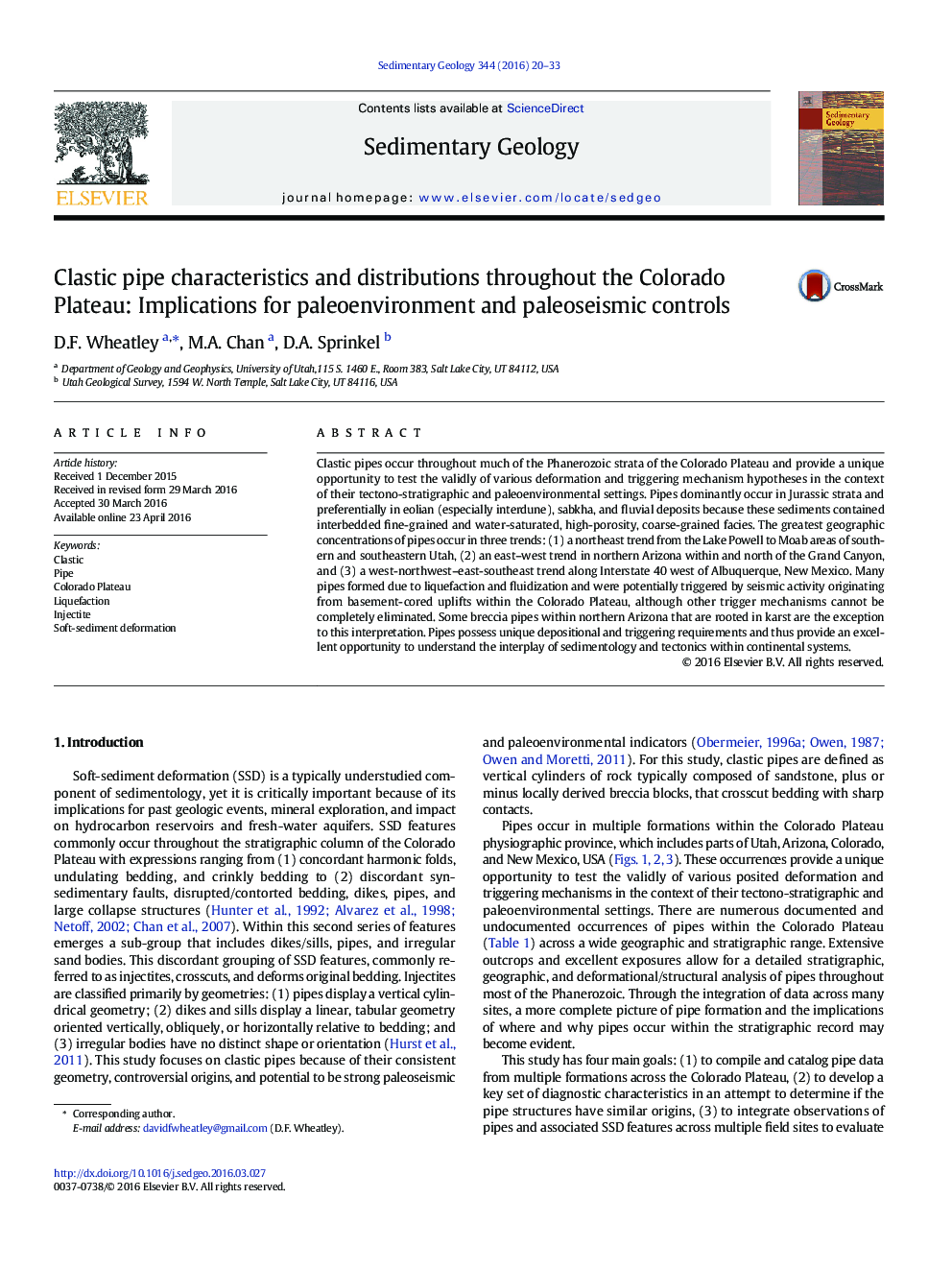| Article ID | Journal | Published Year | Pages | File Type |
|---|---|---|---|---|
| 4688946 | Sedimentary Geology | 2016 | 14 Pages |
•Pipes occur dominantly within the Carmel and Entrada formations.•Pipes occur most frequently within eolian, sabkha, and fluvial environments.•Pipes form due to liquefaction and subsequent fluidization.•Liquefaction is triggered by reactivation of basement structures.
Clastic pipes occur throughout much of the Phanerozoic strata of the Colorado Plateau and provide a unique opportunity to test the validly of various deformation and triggering mechanism hypotheses in the context of their tectono-stratigraphic and paleoenvironmental settings. Pipes dominantly occur in Jurassic strata and preferentially in eolian (especially interdune), sabkha, and fluvial deposits because these sediments contained interbedded fine-grained and water-saturated, high-porosity, coarse-grained facies. The greatest geographic concentrations of pipes occur in three trends: (1) a northeast trend from the Lake Powell to Moab areas of southern and southeastern Utah, (2) an east–west trend in northern Arizona within and north of the Grand Canyon, and (3) a west-northwest–east-southeast trend along Interstate 40 west of Albuquerque, New Mexico. Many pipes formed due to liquefaction and fluidization and were potentially triggered by seismic activity originating from basement-cored uplifts within the Colorado Plateau, although other trigger mechanisms cannot be completely eliminated. Some breccia pipes within northern Arizona that are rooted in karst are the exception to this interpretation. Pipes possess unique depositional and triggering requirements and thus provide an excellent opportunity to understand the interplay of sedimentology and tectonics within continental systems.
Graphical abstractFigure optionsDownload full-size imageDownload high-quality image (271 K)Download as PowerPoint slide
